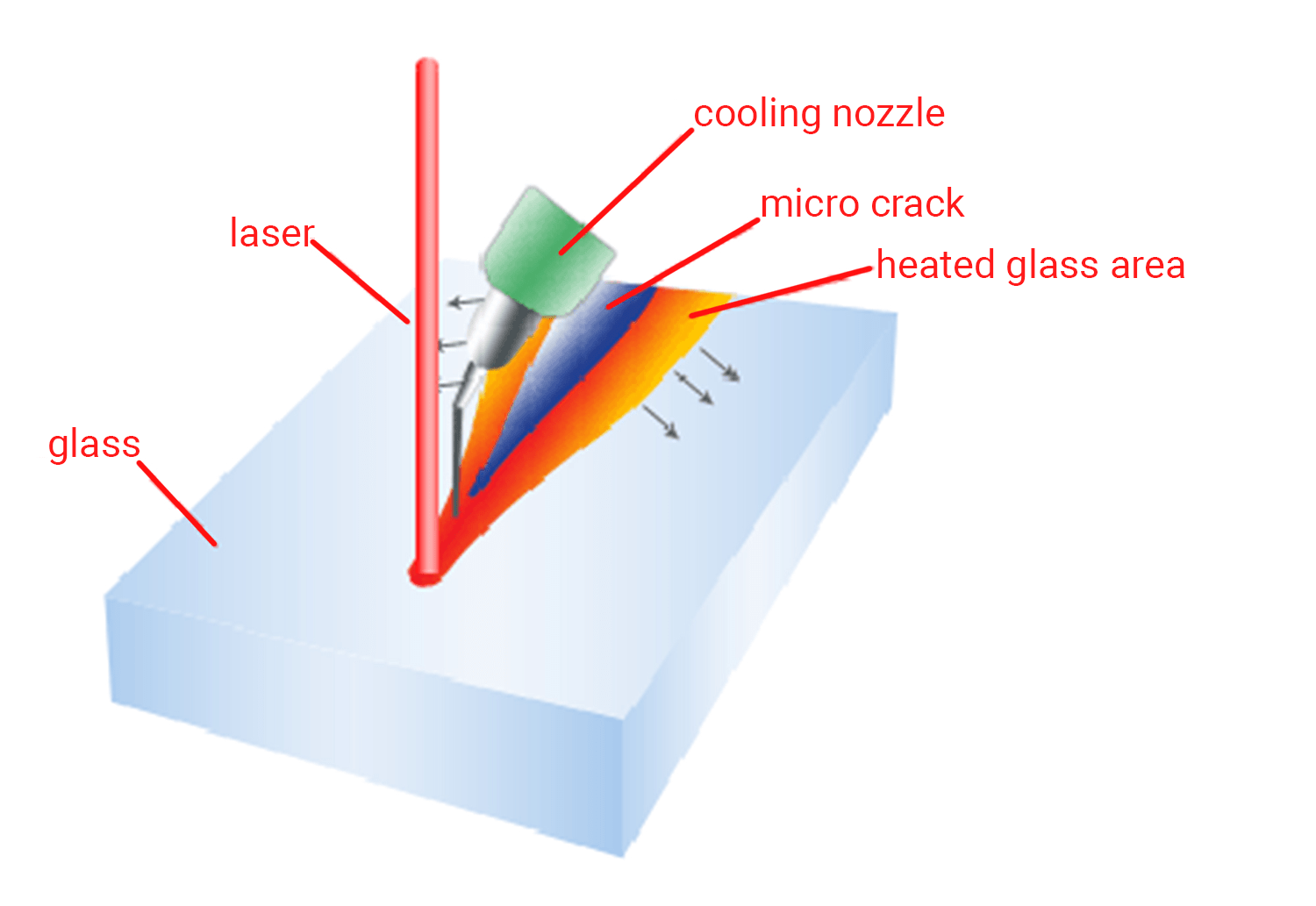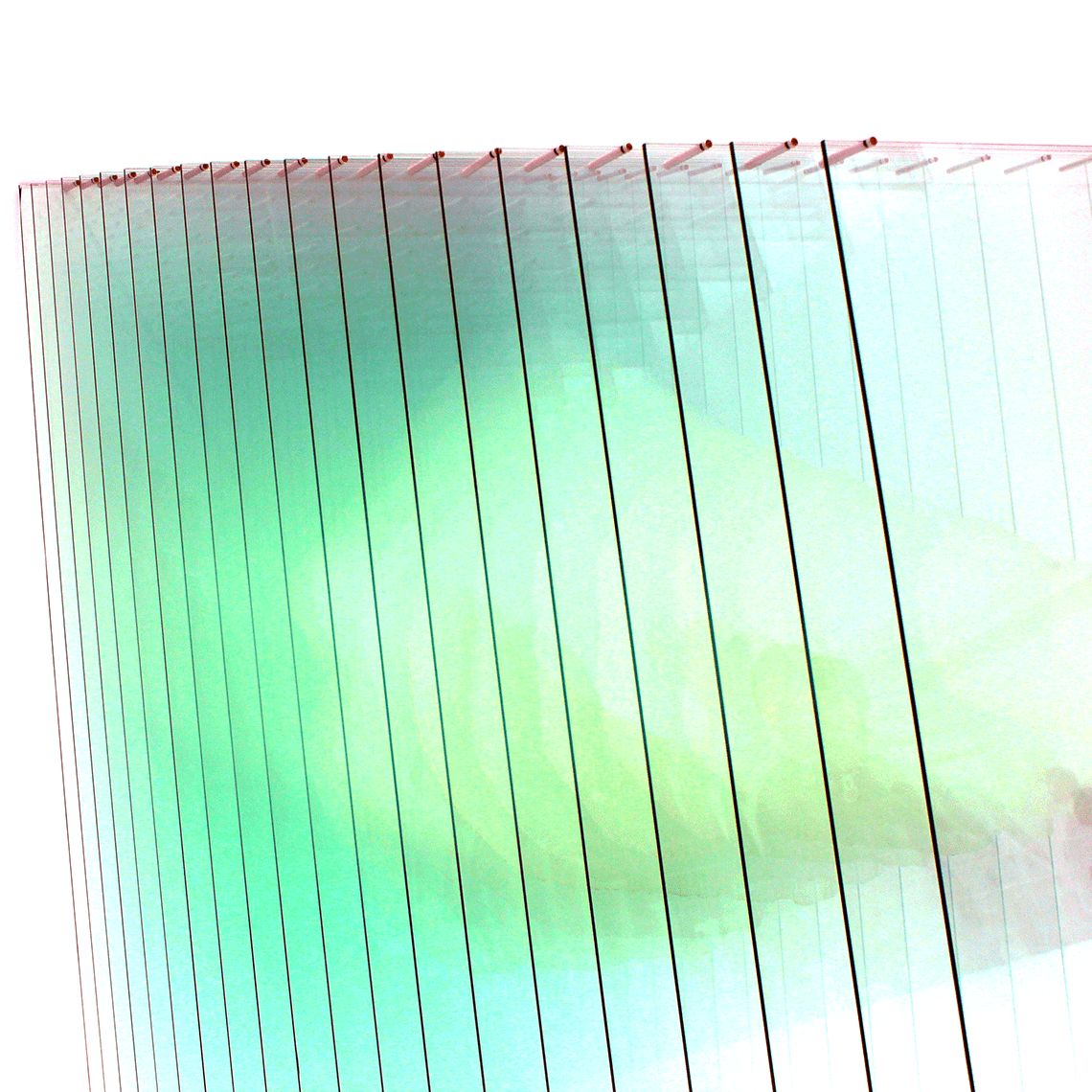Laser Glass Cutting
Zero Width Laser Cutting Technology™ is a method for cutting glass and other brittle non-metallic materials. The process splits materials at the molecular level under a non-contact process with tremendous speed resulting in no material loss, chips, lateral cracks, protrusions, hooks, flares, or any other forms of contaminants. Zero width laser cutting uses a laser-controlled power density profile on the glass surface to generate subsurface forces greater than intermolecular connections. Our patented Zero Width Laser Cutting TechnologyTM has the highest level of precision known to man. This technology has dramatically improved the substrate separation process, which is especially useful for manufacturing flat panel displays commonly used in automobiles and a wide variety of other industries.
How Zero Width Laser Cutting Works
Zero Width Laser Cutting utilizes a fiber laser to induce internal stress which produces an extremely accurate and controlled separation. Since the technique is non-contact, degradations associated with mechanical cutting are eliminated. Yield loss as a result of particulate damage is also greatly reduced. Cutting substrates in cleanroom conditions becomes feasible with ZWLCTTM leading to the ability to introduce a production line concept into substrate manufacturing. This has not been possible before because of debris generated during cutting and edge grinding.
This process significantly increases edge quality and strength. Edge impact strength is increased up to 5 times when compared to full-contact mechanical glass cutting systems. Overall glass component strength is improved by over 80%


The ZWLCT Method
The ZWLCTTM method incorporates cooling of the glass surface following controlled heating, with the correct power density profile, this creates the intermolecular separation of the glass substrate to a certain depth. Depth ( t ) has an inverse relation to the speed ( v ) of cutting, assuming that power ( P ) is constant. This means that the slower the speed the deeper the MicroCrack™ that is formed. Both mathematical models and empirical data support these conclusions and field experience has verified these findings.
Our latest mathematical modeling and empirical data gathering resulted in the development of an improved method and the requisite industrial machinery to enable us to introduce these improvements into the FPD industry. With this new method, we can create internal tensile forces so great that we can achieve total separation of display type glass WITHOUT COOLING. Under these conditions, the MicroCrack™ would propagate in the glass body at a depth of more than 0.7 mm (for bare glass). This process is called Full Body Separation.
